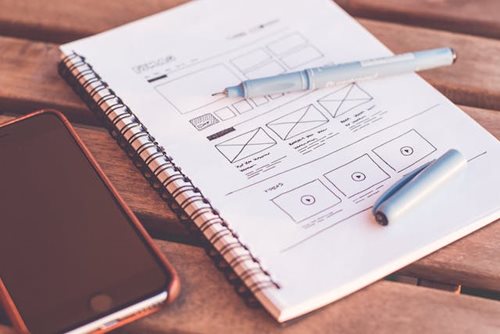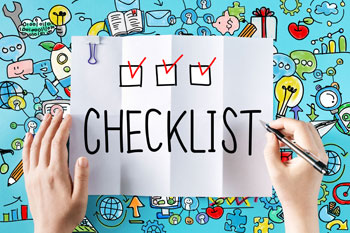Get your free consultation today!
Share with your Colleagues
Categories
ROI Calculator
Moonstone Interactive is the only San Francisco Bay Area web design firm and Internet Marketing expert that offers a free online ROI Calculator
Author: Steve Herz

In the competitive e-commerce landscape, a stellar User Experience (UX) is often the differentiating factor between success and failure. A/B testing is a tool that enables businesses to optimize their websites, apps, and online stores to enhance the UX and boost conversion rates. In this article, we will delve into the world of A/B testing for eCommerce, exploring the various tests that can be conducted and providing insights into identifying which tests to run.
Understanding A/B Testing
A/B testing compares the success of two versions of a page, call to action, or feature to decide which one performs better in achieving a specific goal. In the context of eCommerce, this goal is typically centered around improving the user experience and driving more conversions, whether it's making a purchase, signing up for a newsletter, or any other desired action.
A/B testing uses randomization and control. It involves dividing the audience into two or more groups, each seeing a different version of a webpage, app screen, or a specific feature. The variant that performs better in terms of user engagement, conversion rates, or any other relevant metric is the one that's implemented.
Tests You Can Run for e-Commerce UX
- Homepage Layout:
- Test different homepage layouts, such as the arrangement of product categories, featured products, and promotional banners. Determine which page layout drives more engagement and conversions.
- Navigation:
- Experiment with menu structures, navigation bars, and search functionalities. Test the ease of finding products, filtering options, and the impact of different navigation elements on user engagement.
- Product Page Elements:
- A/B test product page elements, including product images, descriptions, call-to-action buttons, and customer reviews. Optimize these elements for maximum conversions.
- Checkout Process:
- Analyze the checkout process and test variations to reduce cart abandonment rates. Focus on the number of steps, form fields, and payment options.
- Call-to-Action (CTA) Buttons:
- Experiment with different CTA button designs, colors, sizes, and text. Determine which CTA elements drive the most clicks and conversions.
- Personalization:
- Test personalized product recommendations, offers, and content based on user behavior and preferences. Personalization significantly improves the user experience and conversion rates.
- Mobile vs. Desktop:
- Compare the user experience on mobile and desktop platforms. Optimize the layout, content, and functionalities for each platform to fulfill the unique needs of users.
- Site Speed:
- Run tests to assess the impact of site speed on user engagement and conversions. Faster load times often result in improved UX and increased sales.
How to Identify A/B Testing Opportunities?
Identifying the right A/B testing opportunities requires combining data analysis, user feedback, and a deep understanding of your eCommerce business. Here's how to get clues for conducting A/B tests:
- Analyze Analytics Data:
- Dive into your website or app analytics to identify pages or features with high bounce rates, low engagement, or high cart abandonment rates. These are prime candidates for A/B testing.
- User Surveys and Feedback:
- Collect user feedback through surveys, interviews, and reviews. Pay attention to common pain points, suggestions, and complaints. These insights can guide your testing strategy.
- Competitor Analysis:
- Study the user experiences provided by your competitors. Identify areas where you can outperform them by offering a superior UX and run A/B tests accordingly.
- Heatmaps and User Session Recordings:
- Use heat mapping tools and session recording software to visualize user interactions on your website. Identify areas where users spend the most time or encounter issues, which are potential testing opportunities.
- User Persona Research:
- Develop user personas to understand the different segments of your audience. Design the A/B tests to fulfill the specific needs and preferences of the user personas.
- Industry Best Practices:
- Stay informed about eCommerce UX best practices and trends. Regularly benchmark your site against these practices and experiment with changes that align with the latest trends.
Need more encouragement?
The significance of this optimization cannot be overstated. It translates to increased conversion rates, higher customer satisfaction, and, ultimately, a notable edge over rivals in the e-commerce market. With each successful A/B test, companies inch closer to the holy grail of eCommerce: a seamless, intuitive, and persuasive digital experience that turns visitors into loyal customers.
Moreover, A/B testing is not a one-time endeavor but an ongoing journey. It's a journey of continuous improvement and adaptation to changing user preferences, industry trends, and technological advancements. By integrating A/B testing into your regular business practices, you set the stage for a dynamic, user-centric approach to eCommerce that keeps your brand ahead of the curve and consistently exceeds customer expectations.
Ultimately, the story of A/B testing for eCommerce is one of evolution and innovation. It's a narrative in which businesses use data and feedback to sculpt the ideal user experience, crafting their online presence into a platform that's both a pleasure to navigate and a source of unmatched value for customers. So, embark on your A/B testing journey, embrace change, and unlock the potential for enduring eCommerce success in the ever-evolving digital marketplace.


